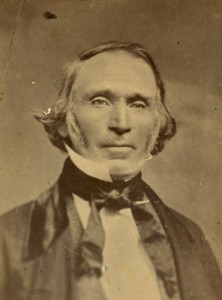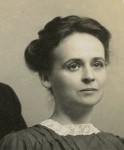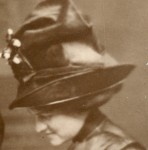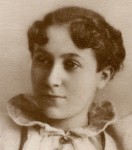It’s Constitution Day
On September 17, 1787 the final draft of the United States Constitution was signed in Philadelphia. We moved from being a Confederation of states to a nation with a strong central government. An election was scheduled on January 7, 1789 and the fun began.
Here we are 223 years later still trying to figure out how to do it right.
In that first election only 10-15% of the population was eligible to vote. Male, white, property owners were the only ones to have that privilege. My husband has a few ancestors who were in the country by then and fit that description and a few that did not.
Francis Blood a revolutionary war general and prominent citizen of Temple New Hampshire probably exercised his franchise. Ephraim Bate Bigelow a runaway from indentured servitude certainly did not.
By 1850 property ownership had been eliminated as a voting requirement. Now many of our white, male relatives could vote if they had obtained citizenship. William Martin and Francis Blood, grandson of the revolutionary War general probably voted.

But in 1855 Connecticut adopted the first literacy test, quickly followed by Massachusetts. These literacy tests were designed to keep too many newly minted Irish-American citizens from voting. They would later be used to discriminate against other groups, most notably African-Americans
The newly arrived Irishman John Costello would not have voted.
The Coles, the Silvers, and the Bublicks had yet to arrive in the United States.
The 15th amendment to the constitution was passed in 1870. It gave all male citizens the right to vote, including former slaves. It was the beginning of a long road to real voting rights for African-Americans.
I don’t think we have any African-American ancestors. We certainly had some ancestors who could not pass a literacy test.
In the 1890’s poll taxes and literacy tests were adopted throughout the South. The literacy test presented a problem as it excluded many white voters along with the African voters for whom it was intended, so grandfather clauses were adopted, allowing those who could vote before 1870 to continue to do so irrespective of literacy or tax qualifications. In 1915 the Supreme Court outlawed literacy tests.
At the turn of the twentieth century the Western states started granting women the right to vote in state and local elections.
And–ta-da– in 1920 the 19th Amendment to the United States Constitution is passed and women get the right to vote in national elections. Lots of people in my family gained the right to vote in 1920.



So now all U.S. citizens can vote, right? Well, not quite. That would happen in 1924, when Indian Citizenship Act grants all Native Americans the rights of citizenship including the right to vote in federal elections. Of course, residents of the nation’s capital couldn’t vote in presidential elections until the 23rd Amendment was passed in 1961.
This of course, doesn’t stop states from attempting to block some of the people from voting. The Voting Rights Act of 1965 finally put an end to the poll tax. Somehow literacy tests had made their way back into law and were finally banned in 1970.
And finally in 1971 the 26th Amendment lowered the voting age to 18.
The national argument over who can vote continues of course, with cases about voter ID requirements moving through the courts as I write this. We all want our choice to win. I think the best way to achieve this is not to stop others from voting, but to get off your behind, even if it’s raining, and get to the polls on November 6, 2012; unless you’re voting for the other guy, then you can stay home.

Leave a Reply